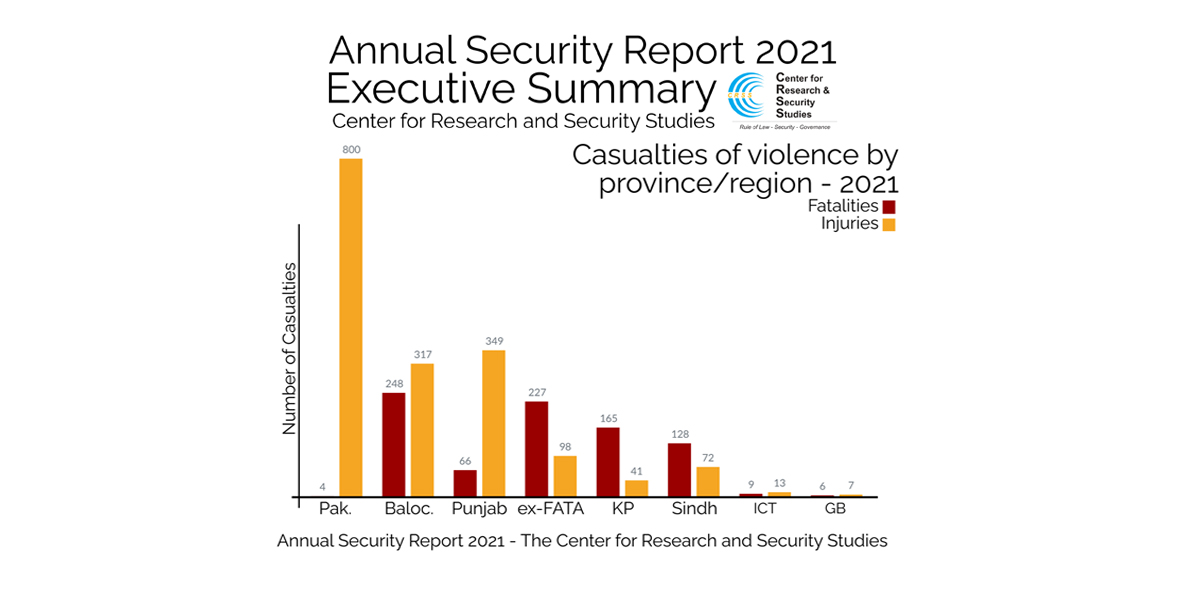After consistent decline since 2015, violence in Pakistan increases by an alarming 42% in 2021
Violence related casualties in Pakistan declined at a steady rate since 2015, plateaued somewhat in the year prior, but seem to have accelerated dramatically this year again. With an increase of roughly 42% in 2021, Pakistan suffered 853 fatalities (up from 600 last year), and 1,690 injuries, directly linked to violence-related incidents. Nearly 75% of all violence-related fatalities were recorded from two provinces – KP (including FATA) and Balochistan. Of the total fatalities from violence in the country, Punjab province accounted for 8%, followed by Sindh (tables 1 and 2).
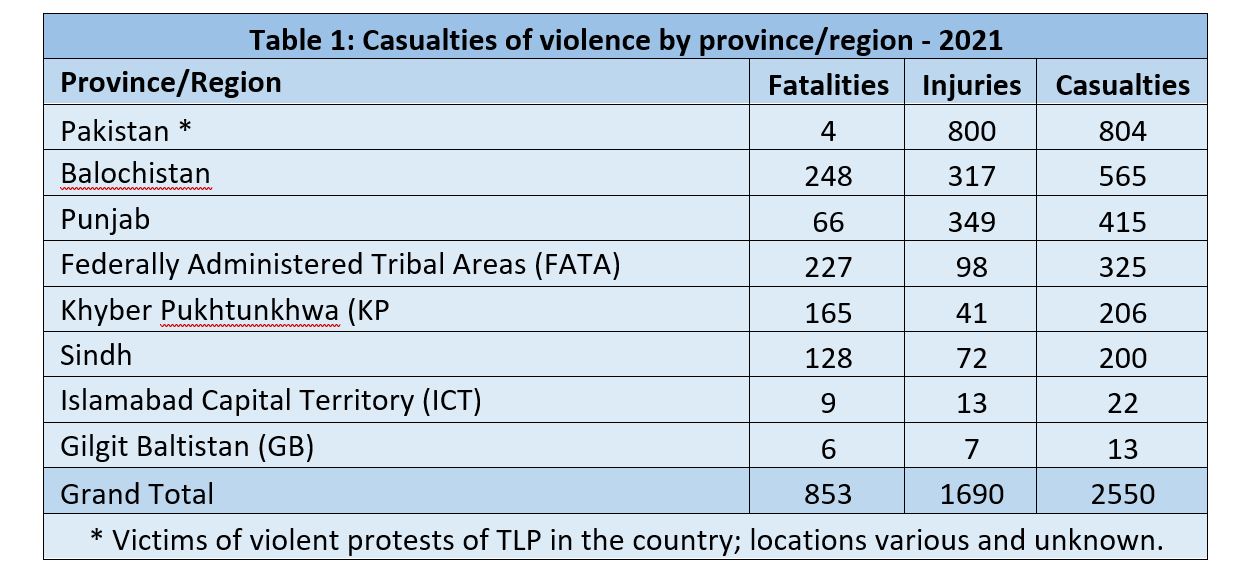
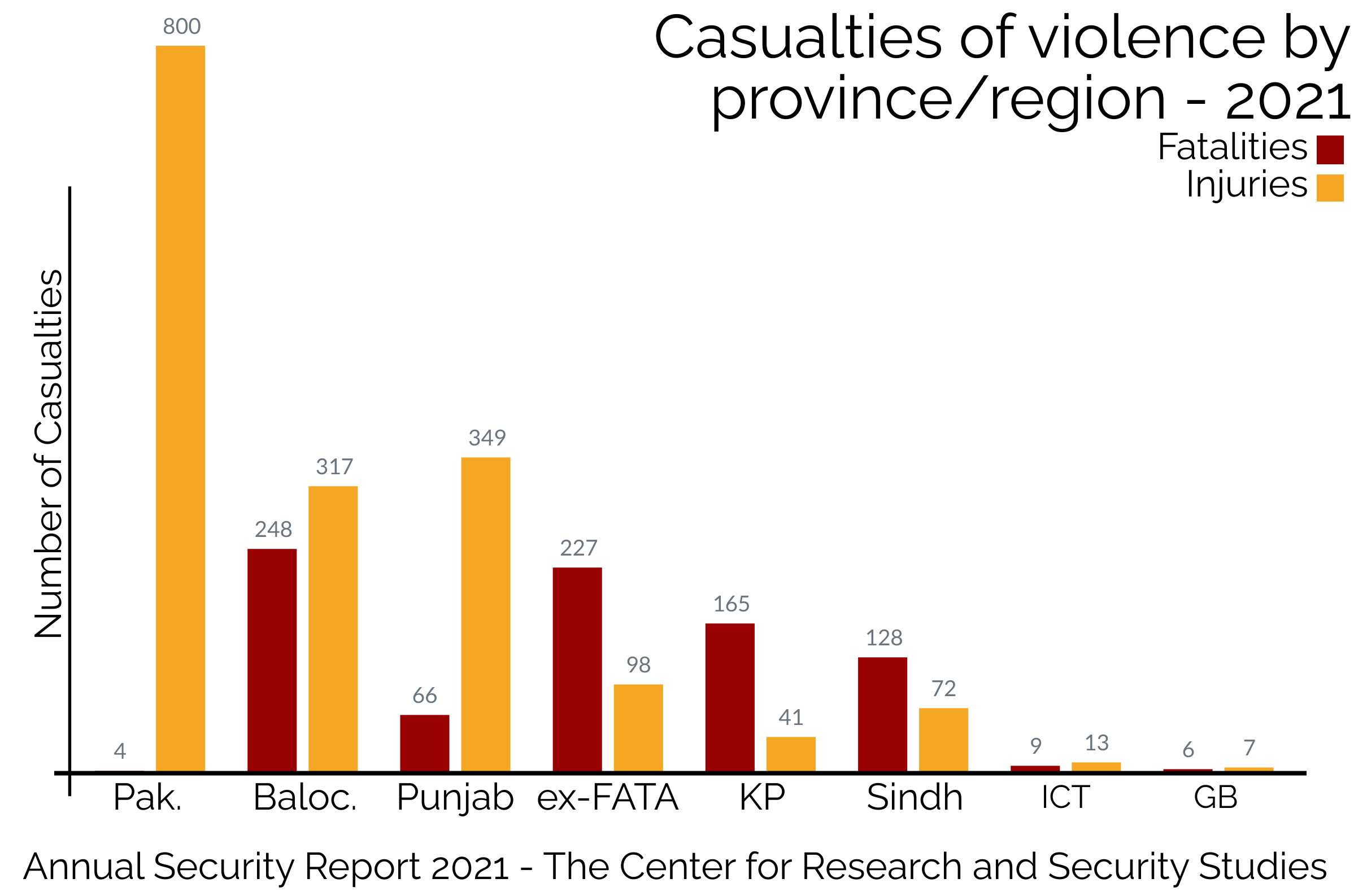
Compared to the last year’s fatalities, all regions except ICT and GB suffered an exponential surge in violence with Balochistan accounting for a net 80% increase in violence-related fatalities (table 02).
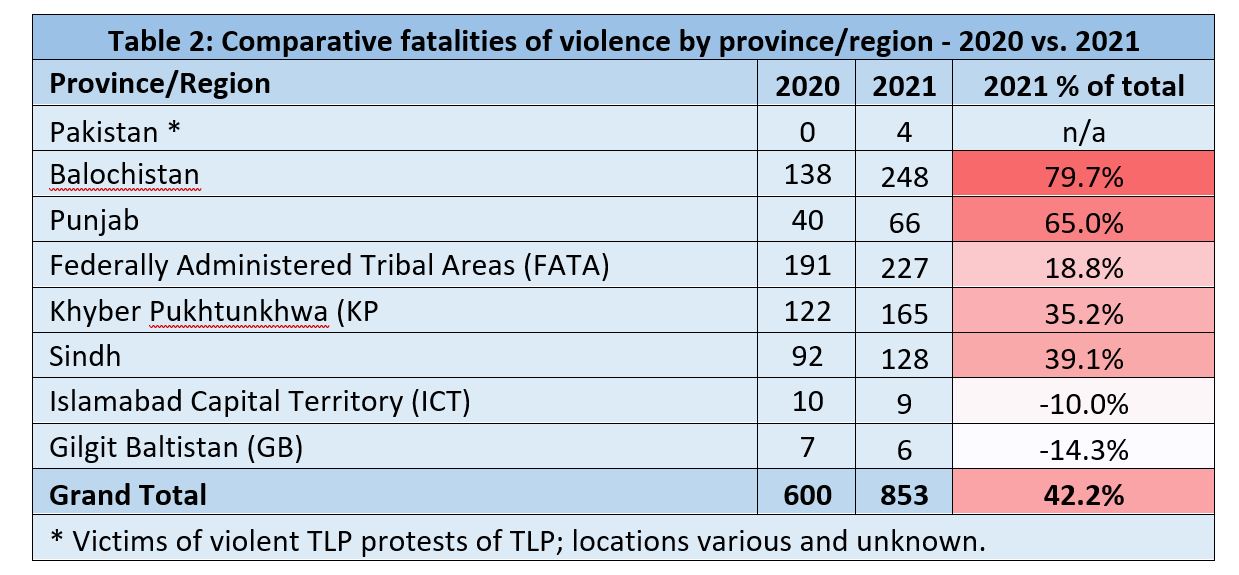
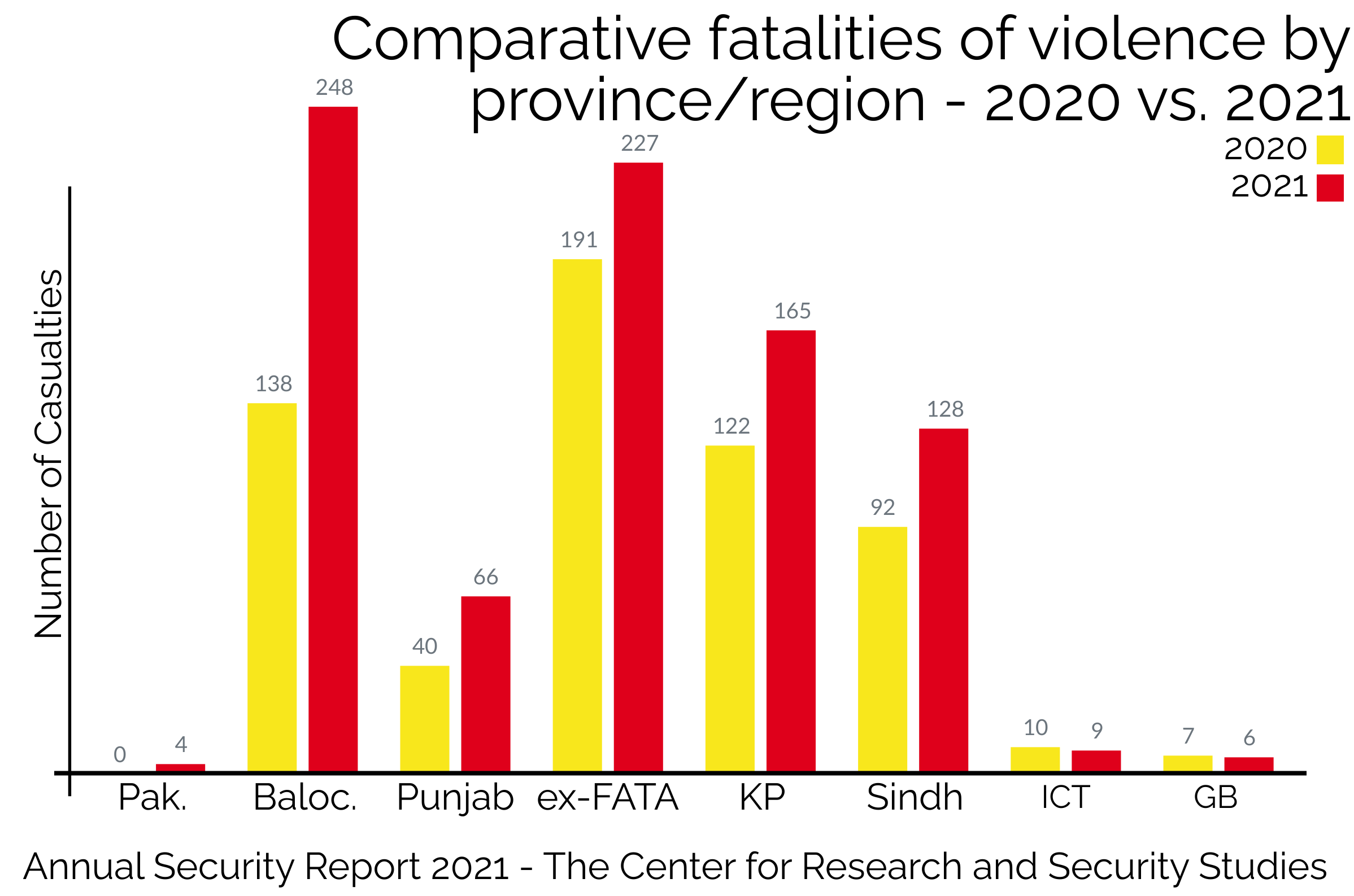
Commensurately, both security operations and terror attacks increased this year. A total of 146 security operations were carried out during this year leaving 298 outlaws dead – a rise of more than 40% against the last year’s figures. In contrast, there were 403 terror attacks compared to last year’s 260 attacks (table 3). Four suicide attacks took place this year that left 20 persons dead as compared to two suicide attacks in last year that took 10 lives (table 03).

An alarming upsurge of over 41% was observed this year in the fatalities of security personnel. Last year, there was a decline of 18% in security personnel’s fatalities. Outlaws (including militants, insurgents, and criminals) suffered a 26.5% increase in fatalities while the civilians accounted for the largest number of the victims of violence. As a whole, the combined losses of civilian and security personnel’s lives were 74% of the total fatalities while the outlaws, the main perpetrators of violence, had suffered one fourth of the total fatalities – a rise of militancy that can be attributed to the success of the Taliban in Afghan that had bolstered the morale of Pakistani militants operating from within and outside of the country (table 4).

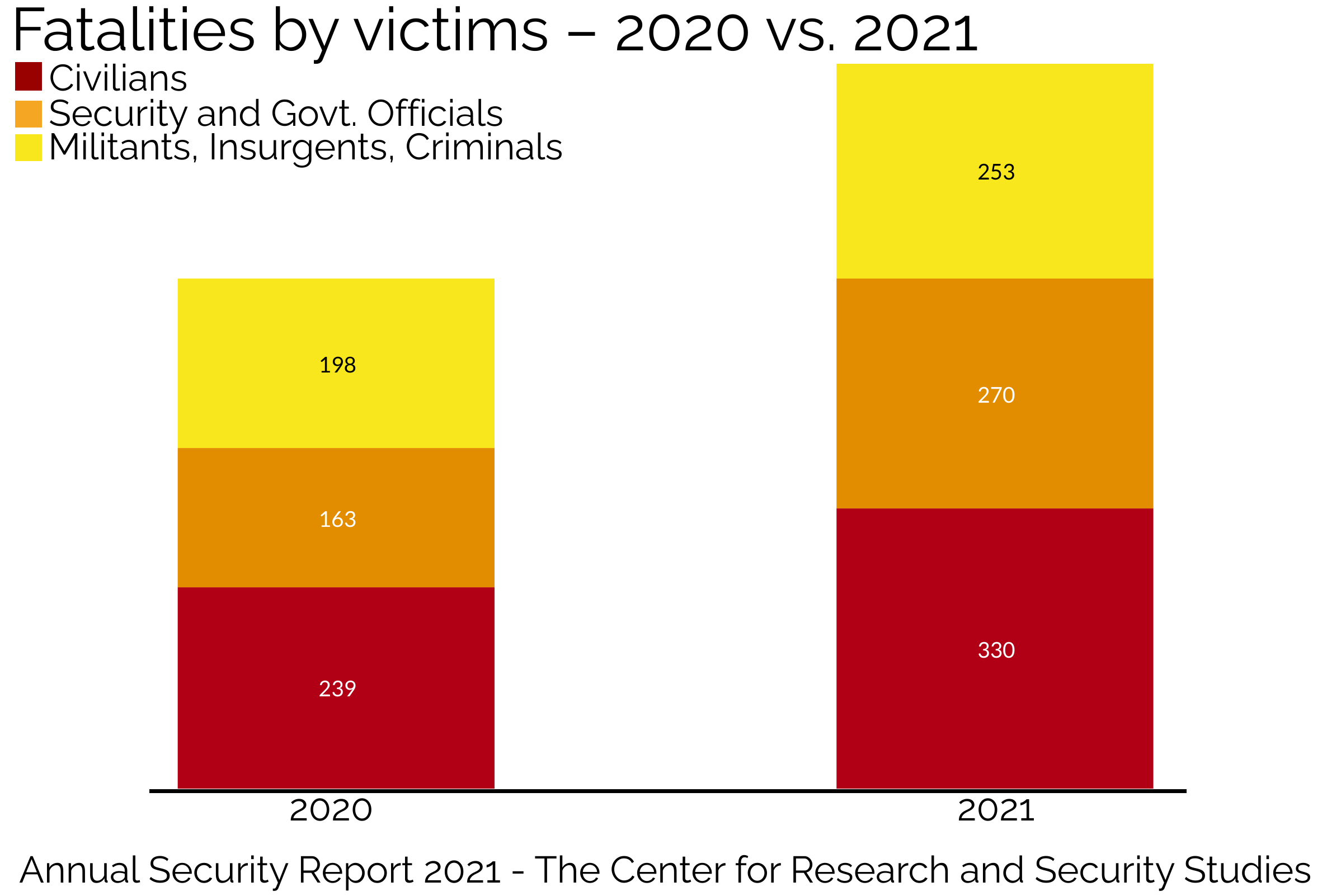
Afghan militants and even a member of the Afghan Taliban were reported to have been involved in violence in Pakistan that left 15 persons dead. The separatist groups, BLA, BLF, BRA, BRG, and SRA (see tables 5 and 6) also continued their activities leaving 25 persons dead and 56 wounded. The militant organization, Daish (Islamic State or IS) also carried out two attacks that left 12 persons dead while the Tehreek-e-Taliban Pakistan (TTP) claimed to have carried out 10 attacks leaving 34 dead and 32 wounded. The criminals, dacoits, drug smugglers, Ladi and Rahim Phulpoto gangs had also resorted to violence and left 22 people dead and 6 wounded.
Mob violence brought about by Tehreek-e-Labbaik Pakistan (TLP) protests resulted in the deaths of 13 people with another 1056 persons wounded, mostly policemen. Inspired by the TLP protests, some teenagers also took the law into their hands and carried out violent attacks in the name of religion. One teenager killed an Ahmadi homeopathic doctor in Bazidkhel area of Peshawar and two others wounded an Ahmadi Head Master in Layyah chanting slogan of ‘Labbaik ya Rasul Allah’.
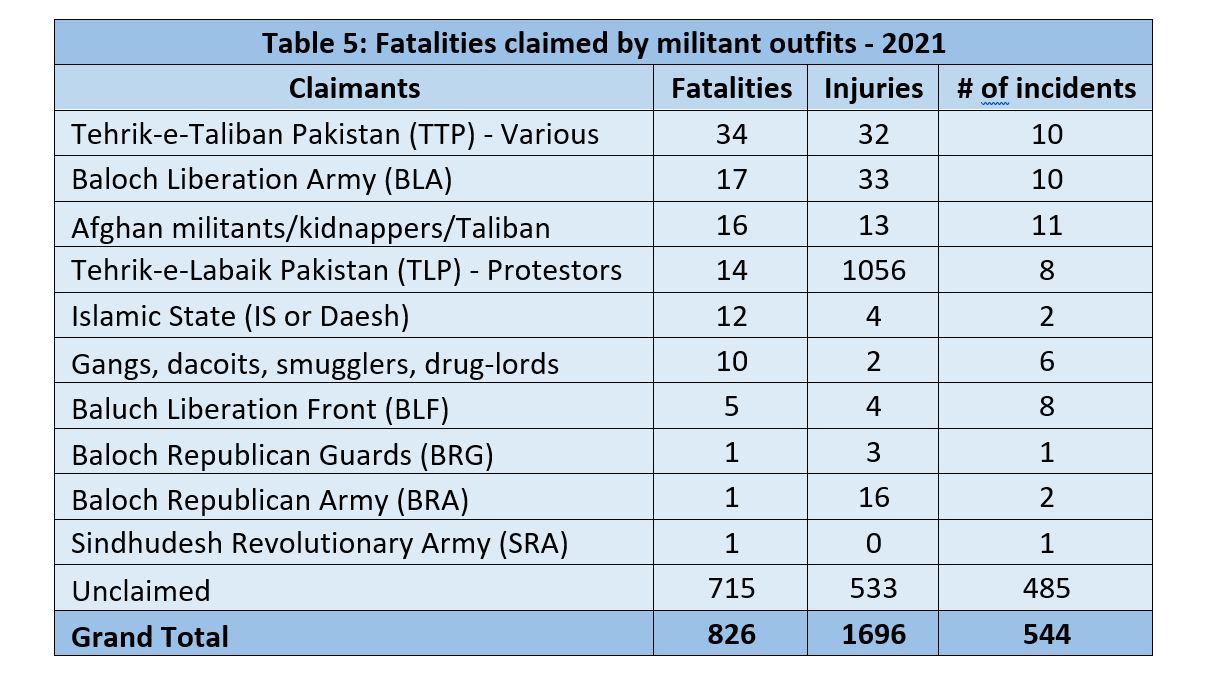
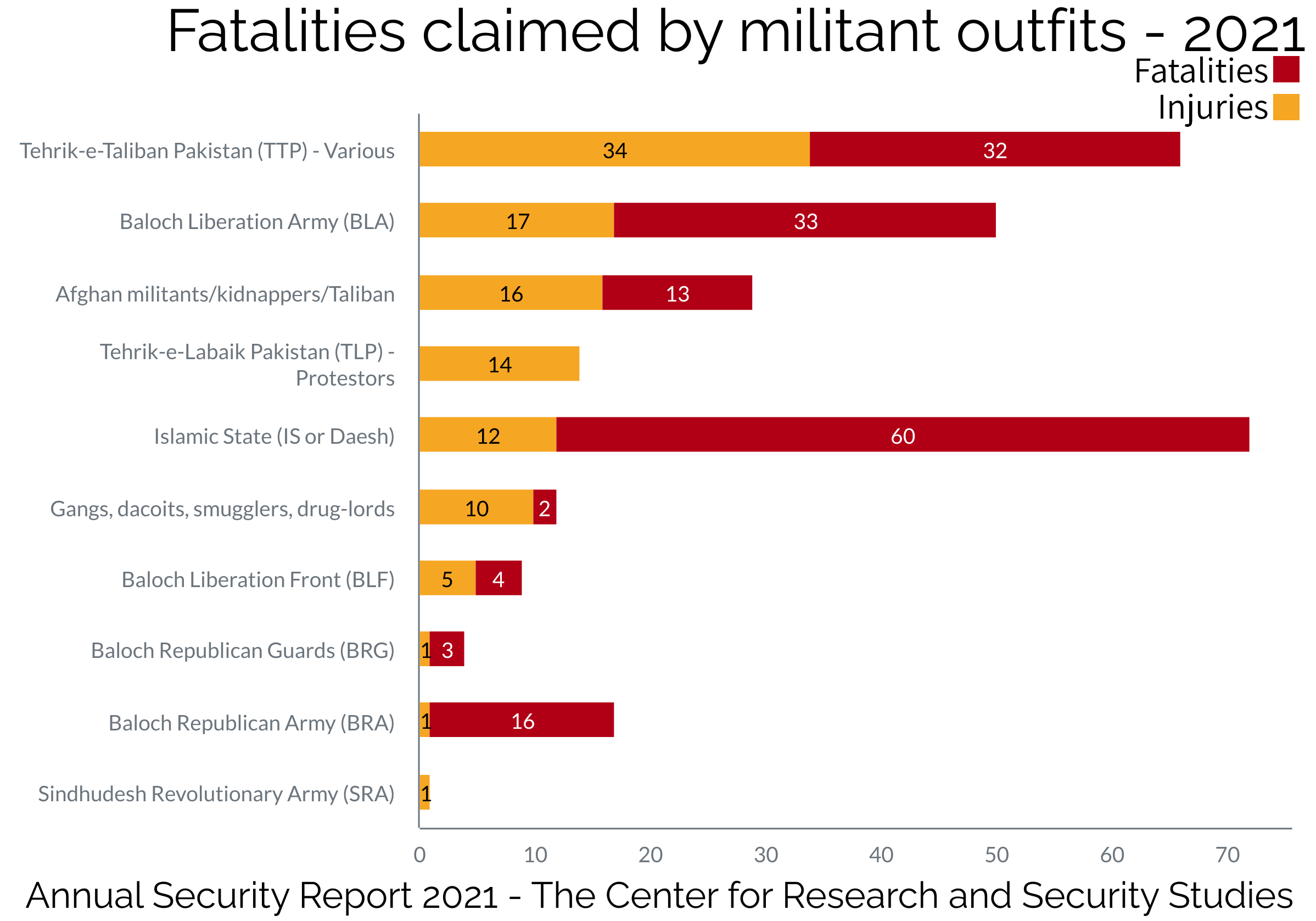
A large number of outlaws were also arrested by the security officials during this year and the highest number of them were the militants belonging to TTP (44), Daish (31), AQ and AQIS (8), Afghan militants (6), Zainebyuon Brigade (5), LeT (2), LeJ (1) and some others whose affiliation to any militant outfit was not reported. Three security personnel were also apprehended during this year. Interestingly, three militants arrested this year were affiliated with both TTP and Daish.
A total 32 militants associated with the separatist groups were also arrested during this year. Of them 17 belonged to SRA, 7 to BLA, 2 to UBA, 1 to JSMM, and the identity of the remaining 5 separatists were not disclosed in the report.
Among the 14 hard core criminals arrested during the year there were 5 from Lyari gangs, 4 from Zahid Ladla gang, 4 from dacoits of kucha areas, and 1 from Shiraz Comrade gang.
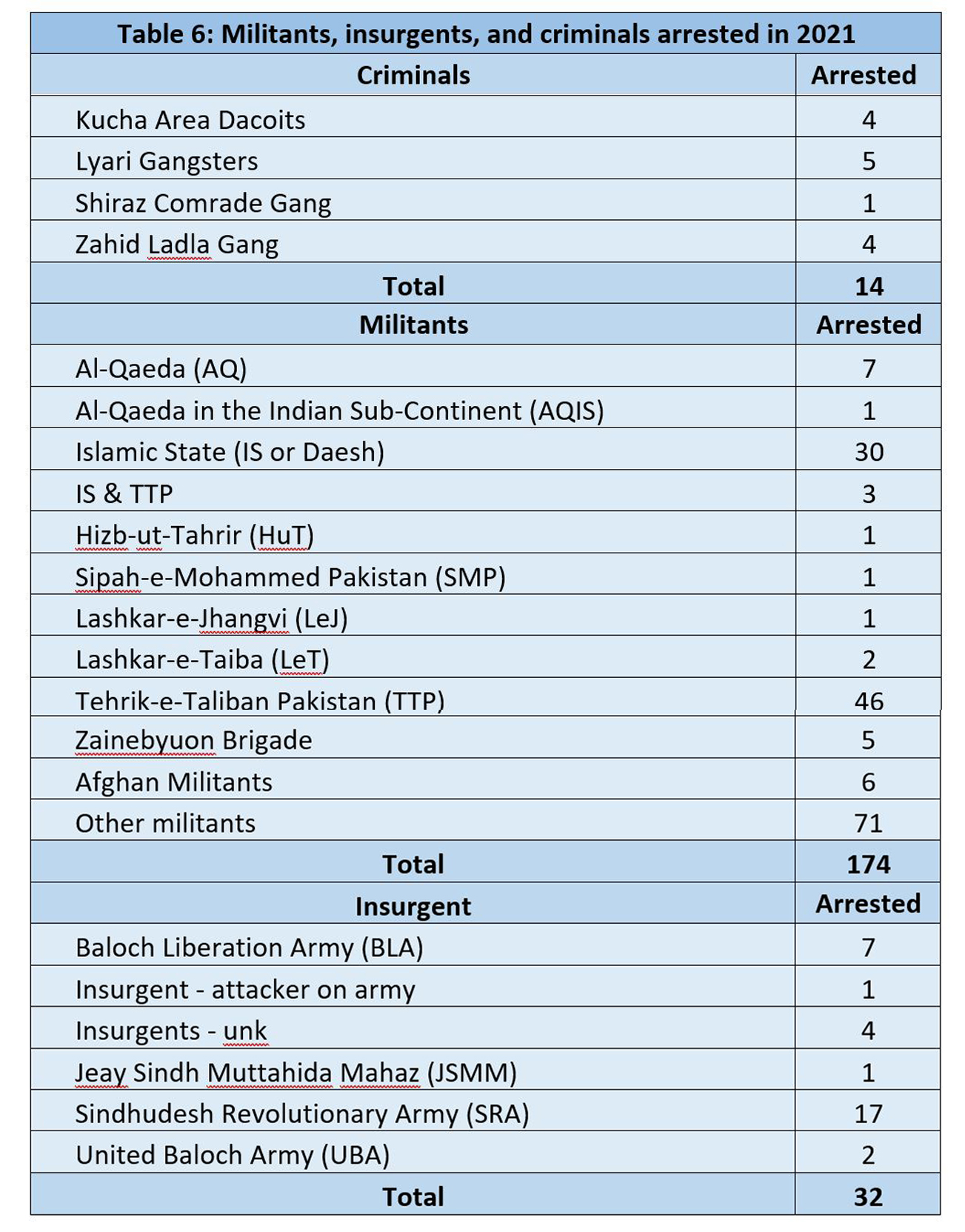
The government had initiated dialogues with the TTP leadership in Afghanistan to seek a peaceful solution to the ongoing wave of militancy in the country. As a goodwill gesture, the government and TTP had announced a ceasefire for a month that ended on December 11, 2021. Despite the government’s willingness to extend its duration, the TTP refused to extend its limit. It is claimed that while the dialogues are still ongoing with the TTP, the resurgence of violence with security personnel as the main target has become a matter of concern.

